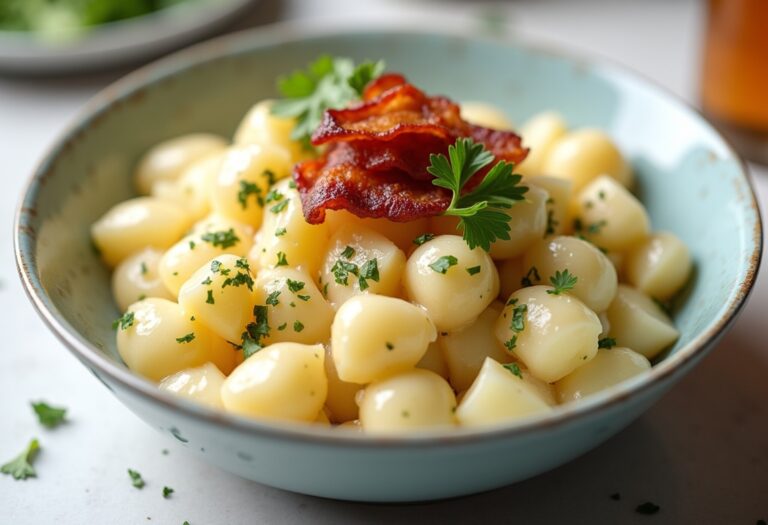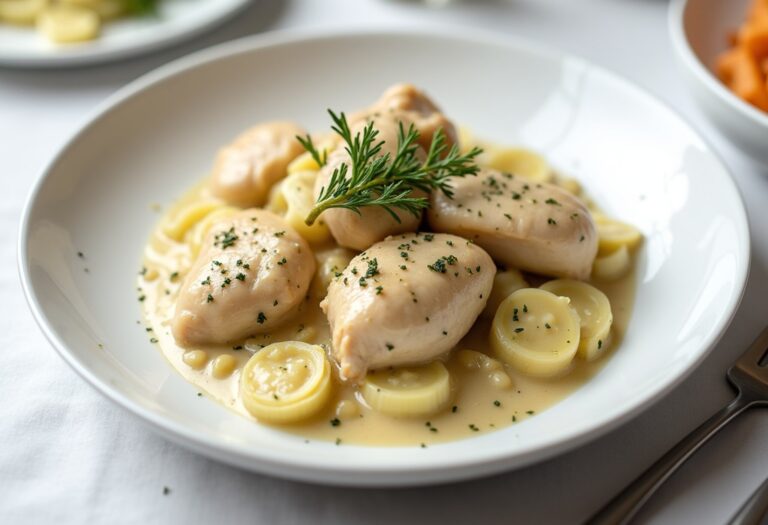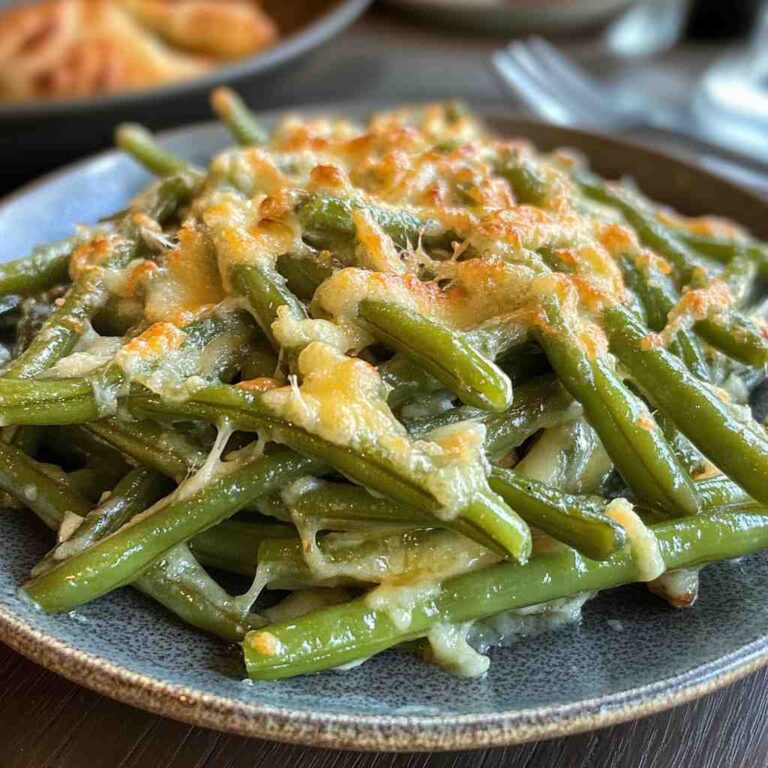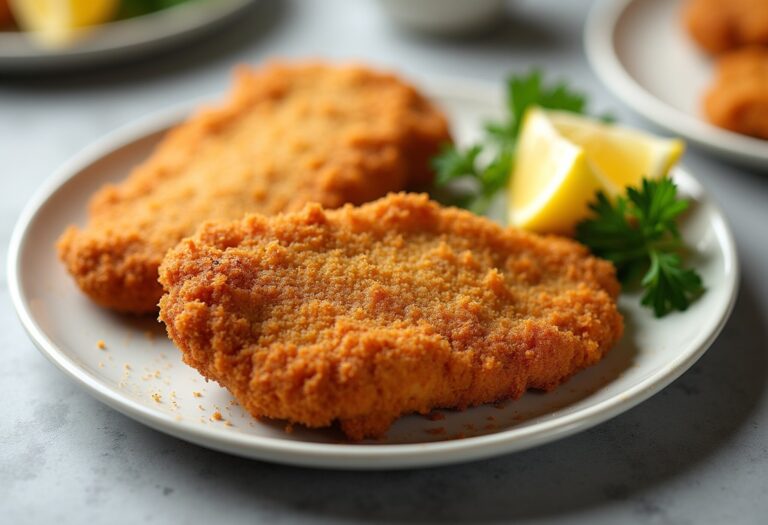Semolina Pasta Dough
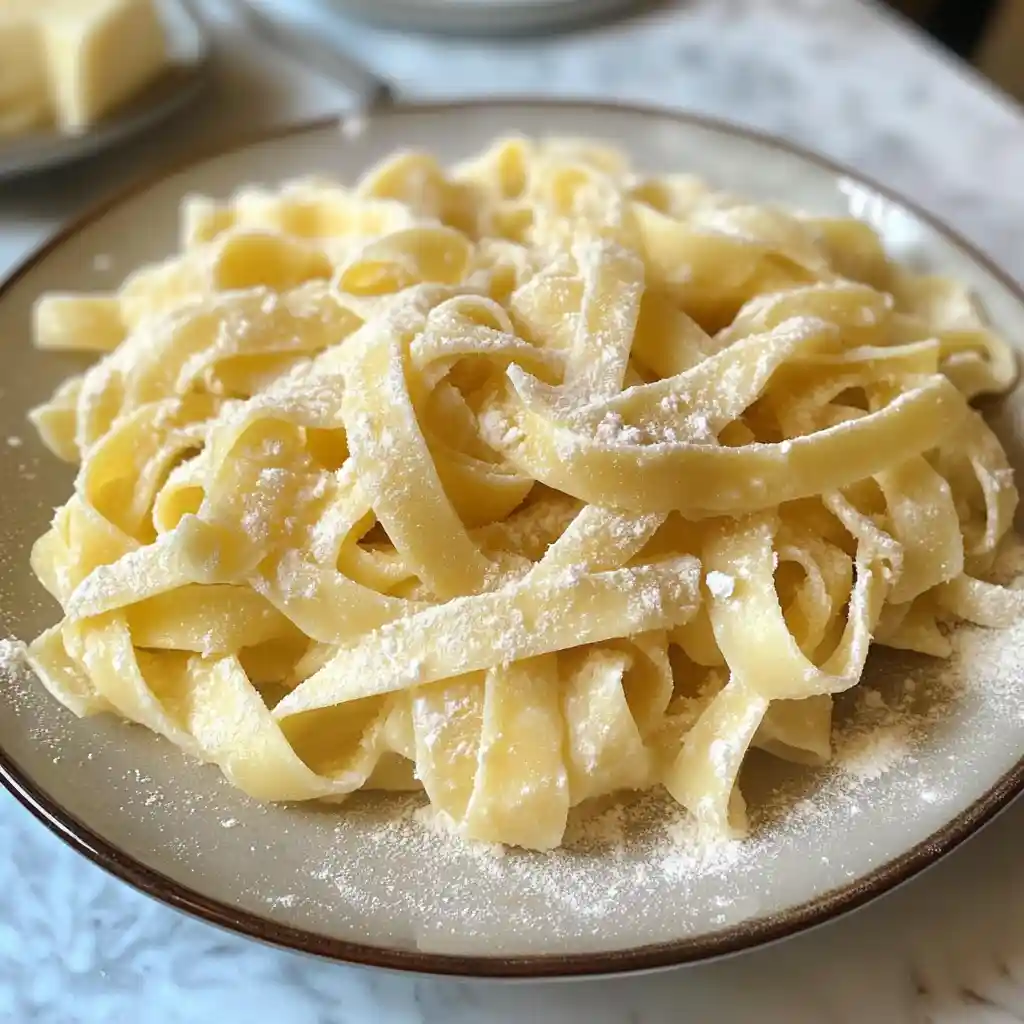
Homemade pasta is a true delight, and when it comes to creating that perfect texture and flavor, semolina flour is the star ingredient. This semolina pasta dough recipe is a game-changer, delivering the authentic taste and feel of fresh Italian pasta that will have your taste buds singing. Whether you’re a seasoned pasta maker or a beginner, this recipe is sure to become a new favorite in your kitchen.
Semolina flour, derived from durum wheat, gives this pasta dough a heartier, more substantial texture that sets it apart from traditional all-purpose flour pastas. The result is a pasta that holds its shape beautifully, with a satisfying bite that pairs perfectly with your favorite sauces and toppings.
❤️ Why You’ll Love This Recipe ❓
Homemade pasta is truly a labor of love, but this semolina dough recipe makes the process both enjoyable and rewarding. The combination of semolina flour, eggs, and a touch of olive oil creates a dough that’s easy to work with, rolling out smoothly and cutting into perfect strands every time.
What sets this semolina pasta apart is the texture – it’s delightfully al dente, with a pleasant chewiness that stands up to even the heartiest of sauces. And because you’re in control of the ingredients, you can feel good about serving your family a healthier, preservative-free pasta option. Plus, the make-ahead possibilities make it a breeze to have fresh pasta on hand whenever the craving strikes.
🛒 What You Need to Prepare Semolina Pasta Dough ❓
• 3 large eggs
• 1 tablespoon olive oil
• 1/2 teaspoon salt
The beauty of this semolina pasta dough is that most ingredients are pantry or freezer staples. The combination of nutrient-rich semolina flour, protein-packed eggs, and aromatic olive oil creates the Italian-inspired flavor profile that has made homemade pasta recipes perennially popular.
📝 How to Make Semolina Pasta Dough Step-by-Step ❓
• Step 2: Turn the dough out onto a clean, lightly floured surface and knead for 5-7 minutes, until the dough becomes smooth and elastic. If the dough is too sticky, add a bit more semolina flour as needed.
• Step 3: Cover the dough with a clean, damp towel or plastic wrap and let it rest for 30 minutes. This allows the gluten to relax, making the dough easier to roll and shape.
• Step 4: After the resting period, use a rolling pin to roll the dough out into a thin sheet, about 1/8-inch thick. Lightly dust the surface and dough with semolina flour as needed to prevent sticking.
• Step 5: Use a sharp knife or a pasta cutter to cut the dough into your desired shape, such as long noodles, squares, or shapes. Lightly dust the cut pasta with semolina flour to prevent it from sticking together.
• Step 6: Bring a large pot of salted water to a boil. Add the fresh pasta and cook for 2-3 minutes, or until it floats to the surface and is al dente. Drain and serve immediately with your favorite sauce.
⏱️ Timing Overview
• Resting time: 30 minutes
• Cooking time: 2-3 minutes
• Total time: 47-48 minutes
Compared to traditional dried pasta which can take up to an hour to prepare, this semolina pasta dough saves you nearly 50% of your cooking time while delivering similar flavors and a superior texture.
👩🏻⚕️ Nutritional Information
Per serving (based on 4 servings):
• Protein: 11g
• Carbohydrates: 48g
• Fat: 5g
• Fiber: 2g
• Sodium: 299mg
These homemade semolina pasta noodles provide approximately 22% of your daily protein requirements and 8% of your daily carbohydrate needs, making them not just delicious but nutritionally valuable as well.
🔄 Healthier Alternatives for the Recipe
• Lower-carb version: Replace up to 1/3 of the semolina flour with almond flour or coconut flour for a lower-carb pasta alternative.
• Dairy-free adaptation: Use aquafaba (the liquid from a can of chickpeas) in place of the eggs for a vegan, dairy-free pasta dough.
• Added protein: Stir in 2 tablespoons of whey protein powder or ground flaxseed to boost the protein content.
• Boost vegetables: Purée roasted vegetables, such as spinach or beets, and mix into the dough for added nutrients and color.
These modifications can reduce calories by up to 15% or adapt the recipe for specific dietary needs without compromising the fundamental flavor profile of the semolina pasta.
🍽️ Serving Suggestions
• Pair the semolina pasta with grilled or roasted vegetables for a light, satisfying meal.
• Complement the pasta with a fresh green salad and garlic bread for a complete Italian-inspired feast.
• For a family-style dinner, serve the semolina pasta alongside meatballs or Italian sausage and a side of roasted Brussels sprouts.
• Create an impressive charcuterie platter with the homemade pasta, cured meats, olives, and a selection of Italian cheeses.
❌ Common Mistakes to Avoid
• Not letting the dough rest: Skipping the 30-minute resting period can make the dough difficult to roll and shape, leading to uneven thickness and ragged edges.
• Overcrowding the pot: Adding too much pasta to the boiling water can cause the noodles to stick together. Cook the pasta in batches, if necessary, to maintain the ideal al dente texture.
• Overcooking the pasta: Semolina pasta cooks quickly, so be sure to keep a close eye on it and remove it from the boiling water as soon as it floats to the surface and reaches the desired doneness.
• Not using enough semolina flour: Failing to dust the work surface and dough with semolina flour can lead to the pasta sticking together, making it difficult to shape and cook.
🧊 Storing Tips for the Recipe
These homemade semolina pasta noodles retain their quality remarkably well:
• Freezing unbaked: Lay the cut pasta in a single layer on a baking sheet and freeze until firm, then transfer to an airtight container or resealable bag. Frozen pasta will keep for up to 3 months.
• Freezing baked: Allow the cooked pasta to cool completely, then toss with a bit of olive oil and freeze in an airtight container for up to 2 months. To reheat, simply add the frozen pasta directly to boiling water or sauce and cook until heated through.
• Reheating: For the best texture, reheat the frozen pasta by adding it directly to a pot of boiling salted water and cooking for 2-3 minutes, or until al dente.
❓ FAQs
Can I make the semolina pasta dough ahead of time?
Absolutely! The dough can be made up to 3 days in advance and stored in the refrigerator, tightly wrapped in plastic wrap. When ready to use, allow the dough to come to room temperature before rolling and cutting.
Can I substitute all-purpose flour for the semolina flour?
While you can use all-purpose flour in place of semolina, the texture and flavor will be quite different. Semolina flour provides a heartier, more authentic pasta texture that holds up better to sauces. If substituting, use a 1:1 ratio and expect a softer, more delicate pasta.
Is this pasta recipe suitable for a gluten-free diet?
For a gluten-free version, you can replace the semolina flour with a gluten-free flour blend that includes ingredients like brown rice flour, tapioca flour, or almond flour. Be sure to adjust the liquid ingredients as needed to achieve the right dough consistency.
Why did my pasta dough turn out tough and chewy?
Overworking the dough is the most common culprit for a tough, chewy texture. Be sure to knead the dough for only 5-7 minutes, and allow it to rest for the full 30 minutes before rolling and cutting. This relaxes the gluten and produces a tender, pliable pasta.
Can I add any additional flavors to the pasta dough?
Absolutely! You can experiment with adding herbs, spices, or even pureed vegetables to the dough. Try stirring in 1-2 tablespoons of chopped fresh basil, garlic powder, or roasted red pepper puree for delicious flavor variations.
Conclusion
These homemade semolina pasta noodles represent the perfect balance of convenience, flavor, and presentation. Whether you’re serving them as a simple weeknight meal or showcasing them on a special occasion platter, they’re sure to impress with their delightful texture and authentic Italian taste.
With simple ingredients and straightforward preparation, this semolina pasta dough demonstrates that sophisticated flavors don’t require complicated techniques – just quality ingredients and a little bit of care in the rolling and cutting process. By mastering this versatile recipe, you’ll be well on your way to enjoying the unparalleled satisfaction of freshly made pasta any time the craving strikes.
Print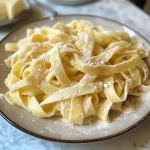
Semolina Pasta Dough
- Total Time: 47-48 minutes
Ingredients
• 2 cups (240g) semolina flour
• 3 large eggs
• 1 tablespoon olive oil
• 1/2 teaspoon salt
Instructions
• Step 1: In a large mixing bowl, combine the semolina flour, eggs, olive oil, and salt. Use a fork or your hands to mix the ingredients together until a shaggy dough forms.
• Step 2: Turn the dough out onto a clean, lightly floured surface and knead for 5-7 minutes, until the dough becomes smooth and elastic. If the dough is too sticky, add a bit more semolina flour as needed.
• Step 3: Cover the dough with a clean, damp towel or plastic wrap and let it rest for 30 minutes. This allows the gluten to relax, making the dough easier to roll and shape.
• Step 4: After the resting period, use a rolling pin to roll the dough out into a thin sheet, about 1/8-inch thick. Lightly dust the surface and dough with semolina flour as needed to prevent sticking.
• Step 5: Use a sharp knife or a pasta cutter to cut the dough into your desired shape, such as long noodles, squares, or shapes. Lightly dust the cut pasta with semolina flour to prevent it from sticking together.
• Step 6: Bring a large pot of salted water to a boil. Add the fresh pasta and cook for 2-3 minutes, or until it floats to the surface and is al dente. Drain and serve immediately with your favorite sauce.
- Prep Time: 15 minutes
- Resting time: 30 minutes
- Cook Time: 2-3 minutes
- Category: Lunch
- Cuisine: Americans
Keywords: Semolina Pasta Dough

